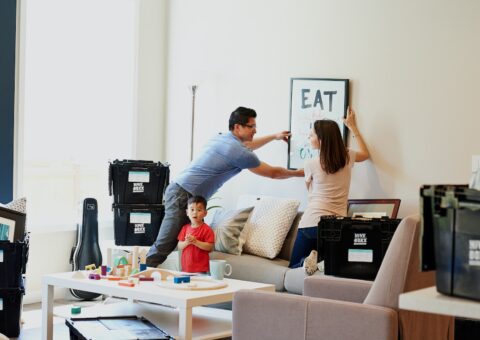Valeriia: Hi Salomi. Welcome.
Salomi: Hi Valeria. Thank you so much for the invitation. I’m very excited.
Valeriia: Yeah, of course, me too. Please tell me a little about yourself. It would be great to get a full picture of who you are, and what you do. So, just feel free to talk about anything.
Salomi: All right, my pleasure. So, I’m Salomi. I am working almost two years at Homelike but it feels like quite some years I would say. I’m responsible for the experience team and what we meet behind is that we’re the responsible team for booking and payments. So everything what comes in your mind around traditional e-commerce, this is what we’re doing, and I would say I’m enjoying a lot because I’m doing what I love and setup in the company is also extremely flexible, the teams focusing on their area of product which means that you have a chance also to become expert of your field.
Valeriia: Definitely. Thanks a lot for the introduction and since we also talk openly internally about our experiences, so that the good, the bad, the ugly. I thought it might be a good idea to share it externally as well, so people can really get an authentic view of how we operate. Sometimes we win, of course, sometimes we do fail but as we always say, we do always learn. So, what is your story? Could you describe the situation when you personally or perhaps together as a team have had a real failure?

We fail better and constantly learn.
#learn #focus #curiosity #excellence
Salomi: Very good question. I think it’s a dilemma of product manager and product teams failing and learning and then, you know, raising from the ashes again and just, you know, proposing some other iteration to your customers.
I can remember one case last year we had. So, it was a feature, let me recap how our booking works, right? So, you might know that we have different types of booking modes and one of them is regular requests. So, users are submitting their request to potential landlords, and the landlord is the one who decides whether the applicant is applicable or not to stay in their apartments, right?
So, either gonna take the tenant and accept your request or decline, so we always motivate our users to send more than one request, because you never know what comes back and you have to guarantee that you know, the process online, digital flow supports them that at the end of the day doesn’t take so long for them to get any confirmation from the landlord. And we decided to offer a feature, which was called ‘One Click Request’. So, when the user would submit a very initial original request to any, you know, specific landlord, at the end of the journey on the confirmation page, where we would say your first request was sent to your landlord, we provided an app selling feature which was like, you know, based on algorithm and criteria we would offer another similar apartment and would suggest to the tenant “Hey, you know, we detect that these are the similar departments.
What if you would just, you know, go ahead and request them with one click because we already collected all the data from the tenant on the upper funnel right in the checkout”. And now, I realized that users like the idea of having the chance with one click request to send several requests to different landlords. Imagine yourself as a tenant. You don’t have to provide your details around the contract. You don’t need to provide details what is the reason why you are moving, your date of birth, all this, you know, applicant related details. But we discovered that users did not like this feature as an upselling feature because they were wondering why you ask me to commit so much and with one click request, request apartment which costs monthly around 5K in London but our initial idea was the opposite.
We were thinking that providing such a feature at the end of the journey would show our channels that “Hey, tenant, you don’t need to go through the same exact flow. We’ve got you covered with saved everything. You just click another apartment and with one click, you will send your request to other landlord”. And then, you know, obviously the learning was that looking at the qualitative and quantitative data, we realized that simply our tenants were not ready to commit so much and also trust the process especially new joiners when brand new customers come.
Of course, you know, they need some peace of mind to trust you, trust platform which we guarantee we have secure payments, and you know along the journey they see trust pilot reviews and how favorite we’re in a mid-stay market. But we discovered that the direction in UX that was not correct for our users. So, it was extremely beautiful time because we were having, of course, predictions about the KPIs, conversion rates, but it was a great failure.
Valeriia: Yeah. That’s interesting. I didn’t know that, but what steps did you take to rectify the situation? So, you basically canceled the feature afterwards?
Salomi: A good question. So, obviously when we are trying to test a feature, we were running it on A/B test, so definitely we always put the traffic to make sure that, you know, I call it A/B test, I call it falling down on a pillow, when you’re falling down. When someone takes, you know, the chair from you. I think everyone has experienced this at school, I am not the only one. So, you’re falling down very badly, but A/B tests are, you’re falling down on a fluffy good pillow. And then, of course, we have a prediction of the conversion rate, so we saw that the direction of trend was not the same as planned and we stopped the A/B test and we started to extensively look into the troubles which was, of course, heat maps, where users are the most active, drop of rates, and all the conversion rates, which we, you know, which guarantees our business to be successful, especially the request process world because this is one of the top GMB, gross margin generations, for us, right?
Valeriia: Okay, I see. So, basically you do not hold on to projects that are not successful. So, you also have to evaluate the feedback from the users and then you kind of adjust in your A/B test. Is that right?
Salomi: Correct. So, we are very much against killing features right away because personally I fully trust in the process of reality and perception. You might be planning something in the given situation and this is the poll, let’s say it’s like two poles, and one pole is the reality. And how you perceive your reality can be totally different from what your customer perceives as a reality. And that’s why we always try to make sure that after we discover what can be the problems or what type of users maybe the feature was running during the Christmas time and the users who were just, you know, visiting our platforms. For them, it was a no-go to request more than one apartment. So, of course, you know, looking into data afterwards, we strongly collaborated with our ux/ui designer and with our data team and we made sure that what can be potential painkiller for the current failure in order to try more, because, you know, you might be thinking that “oh feature doesn’t work”, but can be that for example, on different devices users do not find it ergonomically fine to just request another apartment so reasons can be various. That’s why iteration is a good instrument here to make sure that all this work, it doesn’t, you know, go with the wind, say like this, and A/B test is a good chance because anytime you can stop it, you can just hot fix it, you can stop the test and make sure your full traffic runs without any painkillers that your convention rates do not drop.
Valeriia: Yeah. Makes sense. Alright, and just to summarize like what were your overall learnings from the situation?
Salomi: Oh, the best question what we could receive because we always have a retrospective personally and the team as well. It’s not only sprint base but also, you know, project based as well, what we learned. And one of the first learnings we had was that sometimes commercial features, which is very much centered around our revenues and around our metrics, which brings us the success monetary value should be well-explained to our users, in our case – tenants. Because once you are asking your customer to commit with data, especially in checkout to purchase something, buy something, and you know that our product is not potato, right?!
Our product is apartments that cost around, starts 5K, especially when the market is like central London, for example, this is market regulated prices. You should explain to your tenant why you offer this feature, especially commercial features. You should gain the trust and make sure that you try with small small bits, maybe because in our case would be nice to start with 10% and not run right away the 50%.
I would say these are the learnings and besides this, of course, we learned around the customer profile, what type of customers we’re joining us, looking at the sessions and the unique users. So, we realize who we are exact personas, which were slightly different than what we considered before release.
Valeriia: Yeah, definitely. No doubt that you cannot just make everything perfect from the first attempt. It’s just so essential to understand that each mistake or not mistake, like every try, contains a valuable lesson in the end, so you can really advance it, make it better. And we should just be comfortable, I think, overall sharing these stories.
Salomi, an amazing story and also a great example of how the ideal solution basically comes after various attempts and also experimentation is a key for a desired outcome.
Salomi: Right. I would love, Valeria, to add one remark here to our audience whoever is watching us, and I want to encourage people not to be afraid to fail. I hear from my, you know, from industry product people say that “Oh we’ve failed multiple times”, and they say this with such a sad way, but if you understand and realize and you can label the process that it was a failure. It’s already a step ahead.
Imagine when a feature would be running and you don’t discover it is a failure and you keep going, you know, that you do not take actions. Of course, you’re feeling, you know, the results monitoring value is bigger. So, once you acknowledge that you fail, be happy and celebrate your failure as well because it can be very fast and you can very fast react on your failure.
Valeriia: 100%, I couldn’t agree more. Just seeing this as a learning opportunity in every project, in every teammate, in every customer. Yeah, definitely.
Salomi: That’s it what I wanted to say, Valeria.
Valeriia: Okay, thank you so much once again.
Salomi: Thank you very much. Thank you. Bye.
Valeriia: Bye
Our Working Principles
Our working principles are more than just buzzwords – they were created by us together and are reflected in our daily work behavior and beliefs.
This is who we are and how we work!

We are passionate and commit to ambitious goals.
#purpose #passionate #accountability #commitment

We are one team and boost contribution through collaboration.
#trust #learn #support #transparency

We fail better and constantly learn.
#learn #focus #curiosity #excellence

We are customer obsessed and earn their trust.
#customerfirst #data #solutions #uservalue

We are inclusive and respect each other.
#trust #responsibility #sustainable #flexibility
Join the Homelike team...
Open Application – German speakers (f/m/d)
Full-time, Athens, Barcelona, Cologne, London,
























